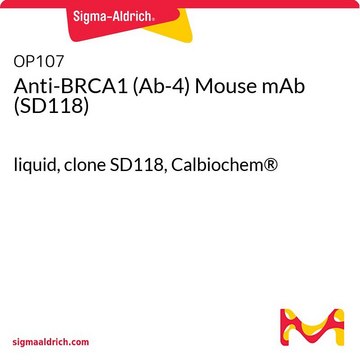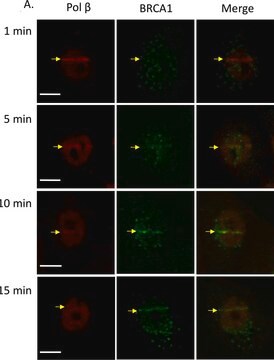10236276001
Roche
DAPI
4′,6-Diamidine-2′-phenylindole dihydrochloride
Sinónimos:
4′,6-Diamidino-2-phenylindole dihydrochloride, 2-(4-Amidinophenyl)-6-indolecarbamidine dihydrochloride, DAPI dihydrochloride
About This Item
Productos recomendados
Quality Level
assay
>90%
form
powder
packaging
pkg of 10 mg
manufacturer/tradename
Roche
λmax
340 nm in aq. suspension
fluorescence
λex 340 nm; λem 488 nm (nur DAPI)
λex 364 nm; λem 454 nm (DAPI-DNA-Komplex)
storage temp.
room temp
SMILES string
Cl.Cl.NC(=N)c1ccc(cc1)-c2cc3ccc(cc3[nH]2)C(N)=N
InChI
1S/C16H15N5.2ClH/c17-15(18)10-3-1-9(2-4-10)13-7-11-5-6-12(16(19)20)8-14(11)21-13;;/h1-8,21H,(H3,17,18)(H3,19,20);2*1H
InChI key
FPNZBYLXNYPRLR-UHFFFAOYSA-N
¿Está buscando productos similares? Visita Guía de comparación de productos
Categorías relacionadas
Application
Biochem/physiol Actions
Quality
Principle
Preparation Note
Preparation of stock solution
Dissolve in double-dist. water to a final concentration of 1 to 5 mg/ml.
Note: Do not use any buffers.
Preparation of working solution
Dilute the stock solution with methanol to a final concentration of 1 μg/ml. The working solution is stable at 2 to 8 °C for about 6 months.
Storage conditions (working solution): Stock solution (1 to 5 mg/ml) at -15 to -25 °C for 12 months.
Working solution (1μg/ml) at 2 to 8 °C for about 6 months.
Reconstitution
Note: Prepare aliquots and store at -15 to -25 °C.
Storage Class
11 - Combustible Solids
wgk_germany
WGK 2
flash_point_f
Not applicable
flash_point_c
Not applicable
Certificados de análisis (COA)
Busque Certificados de análisis (COA) introduciendo el número de lote del producto. Los números de lote se encuentran en la etiqueta del producto después de las palabras «Lot» o «Batch»
¿Ya tiene este producto?
Encuentre la documentación para los productos que ha comprado recientemente en la Biblioteca de documentos.
Los clientes también vieron
Nuestro equipo de científicos tiene experiencia en todas las áreas de investigación: Ciencias de la vida, Ciencia de los materiales, Síntesis química, Cromatografía, Analítica y muchas otras.
Póngase en contacto con el Servicio técnico









